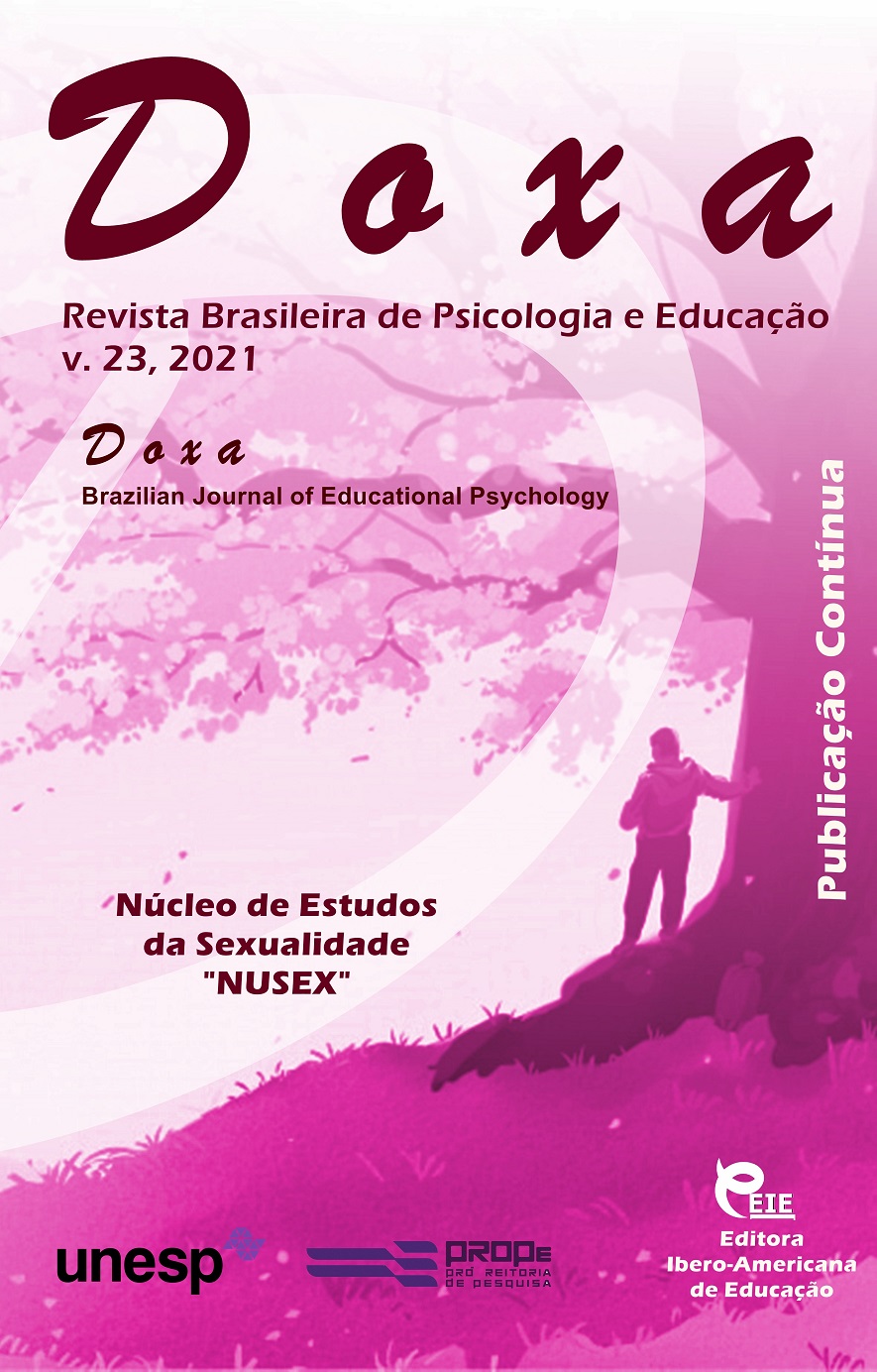Los medios y el dibujo animado “Bob Esponja”: producciones de significado sobre la infancia y sus representaciones sociales
DOI:
https://doi.org/10.30715/doxa.v22i00.15451Palabras clave:
Medios, Dibujos animados, Infancia, ConsumoResumen
El objetivo principal de este ensayo es reflexionar sobre la cultura mediática y la caricatura "Bob Esponja" en la infancia contemporánea. De manera específica, analizar algunos episodios de Bob Esponja y las producciones de significado sobre la infancia y sus representaciones y relaciones sociales. La propuesta de estudio está relacionada con el Proyecto de Investigación - "Semiformación y Educación en el contexto de la Sociedad Dañada: más allá del territorio demarcado" de la Universidad Estatal de Londrina. La metodología es bibliográfica a la luz de los fundamentos de la teoría crítica y de los autores que dialogan con esta base teórica. En este sentido, mediante la autorreflexión en los umbrales de Adorno y Horkheimer, es posible analizar los efectos de la cultura mediática y su diseño sobre el proceso formativo y representativo de la infancia en el escenario actual, así como levantar la gasa a la posibilidad del uso de dibujos animados a favor de una cultura infantil más crítica, diversificada, participativa y emancipadora.
Descargas
Citas
ADORNO, T. Indústria cultural e sociedade. Rio de Janeiro, RJ: Paz e Terra, 2002.
ADORNO, T; HORKHEIMER, M. Dialética do esclarecimento: fragmentos filosóficos. Trad. Guido Antônio de Almeida. Rio de Janeiro, RJ: Jorge Zahar, 1985.
APPLEDAILY. 2020. Disponível em: https://tw.appledaily.com/international/20210330/OQDIUXVK2ZCVBAUIFK7PJ3H7VU/. Acesso em: 20 jan. 2021.
FRANKEN Rabisco (Temporada 2, ep. 34). Bob Esponja. Escritores: Walt Dohrn, Paul Tibbitt e Merriwether Williams. Nickelodeon, 21 jan. 2002.
FRIEDMANN, A. A evolução do brincar. 4. ed. São Paulo, SP: Abrinq, 1998.
KUHLMANN, Jr. Infância e educação: uma abordagem histórica. Porto Alegre, RS: Mediação, 1998.
MÁSCULO, mesmo sem casca (Temporada 4, ep. 61). Bob Esponja. Escritores: Mike Bell e Paul Tibbit. Nickelodeon, 06 maio 2005.
NADER, M. B; CAMINOTI, J. M. Gênero e poder: a construção da masculinidade e o exercício do poder masculino na esfera doméstica. In: ENCONTRO REGINAL DE HISTÓRIA, 16., 2014, Rio de Janeiro. Anais [...]. Rio de Janeiro, RJ: ANPUH, 2014.
ODININO, J. P. Q. Super-heroínas em imagem e ação: gênero, animação e imaginação infantil no cenário da globalização das culturas. 2009. 321 f. Tese (Doutorado em Ciências Humanas) – Centro de Filosofia e Ciências Humanas, Universidade Federal de Santa Catarina, 2009.
OLIVEIRA, M. R. F.; PESTANA, G. G. P. S. A experiência que revela: indústria cultural e semiformação na educação da infância. Revista imagens da educação, Maringá, v. 11, n. 1, p. 156-178, jan./mar. 2021. DOI: DOI 10.4025/imagenseduc.v11i1.47504
PACHECO, E. D. (Org.). Televisão, criança, imaginário e educação: dilemas e diálogos. 4. ed. Campinas, SP: Papirus, 2004.
RIGOTTI, C. Você conhece todas as curiosidades sobre o Bob Esponja? 2019. Disponível em: https://www.purebreak.com.br/noticias/-bob-esponja-e-as-maiores-curiosidades-sobre-o-desenho-da-nickelodeon/85105. Acesso em: 06 maio 2020.
Publicado
Cómo citar
Número
Sección
Licencia
Derechos de autor 2021 DOXA: Revista Brasileira de Psicologia e Educação

Esta obra está bajo una licencia internacional Creative Commons Atribución-NoComercial-CompartirIgual 4.0.
Manuscritos aceitos e publicados são de propriedade da Doxa. É vedada a submissão integral ou parcial do manuscrito a qualquer outro periódico. A responsabilidade do conteúdo dos artigos é exclusiva dos autores. É vedada a tradução para outro idioma sem a autorização escrita do Editor ouvida a Comissão Editorial.









